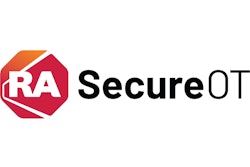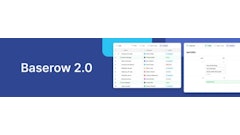
Tariffs create uncertainty. Everyone feels it, and right now, businesses that are bringing in products and parts from other countries are especially feeling it. Multinationals. Mid-market. Even local businesses.
The uncertainty hits core work: pricing, sourcing, bills of material, alternate suppliers, alternate inputs, routes to market, delivery promises, and margins.
But the AI boom has ushered in a handful of new tools that these businesses can be using to lighten their burden and the formula for how AI fights back is simple.
You cannot manage what you cannot measure. You cannot measure what you cannot see. AI helps you see more. Seeing more creates options. Options reduce uncertainty.
What tariffs actually change
Tariffs change landed cost. They shift relative prices between inputs. They can close today a route that made sense yesterday. They can make a long-tail supplier suddenly look attractive. They can force you to break a commitment you made to a customer or a supplier made to you.
The hard part is not the math. It is the combinatorics. Many parts, many suppliers, many routes, many rules. Tariffs are one variable among hundreds. When one variable swerves, the whole plan can wobble.
AI’s strengths
AI does not repeal tariffs. It reduces the fog around them. At minimum, AI should be used to ingest tariff schedules, HS codes, rules of origin, free trade agreements, and exemptions. But the right sort of AI also ingests ERP, CRM, and other gold databases. AI maps parts in your BOMs to those codes. It links suppliers to sites, lanes, and documents. It reconciles duplicate names. It flags gaps in the data.
With that base, it builds a living picture of your options. It can surface equivalent parts or materials that meet spec. It can bring forward approved alternates that were last used years ago. It can identify suppliers in jurisdictions with friendlier treatment. It can propose shifts in mode or route that shave days or duty. It can even suggest blended scenarios that trade cost for service or risk.
On top of that, it simulates outcomes. Landed cost and margin. Lead time and service level. Inventory, cash, and working capital. CO2 and compliance exposure. Probability of stockout under different demand curves.
Here's the AI virtue loop: see more, see faster, generate options, pick a plan with less downside. Faster, always faster.
The data layer matters
You cannot get good answers from garbage data. Many projects fail here.
The fix is not perfection. No supply chain has perfect data. The fix is structure and sufficient signal. If the data is connected and traceable, you can get usable answers even if some bits are missing or stale.
Use a model that matches how supply chains actually work -- networks, not flat tables.
Parts connect to products. Sites connect to lanes. Suppliers connect to contracts and audits. A connected data layer lets AI follow the full thread, and that chain of logic is your audit trail.
Clean up what matters most. Keep master data steady. Keep codes current. Keep specs and approvals versioned. Make changes traceable so you can explain a decision later. That is “enough clean signal” to support confident decisions.
Practical uses to deploy now
Start with work that repeats every week.
1. Tariff-aware BOM intelligence
2. Alternate material suggestion
3. Supplier rebalancing
4. Lane and mode optimization
5. Quote and pricing guardrails
6. Exception playbooks
A short case sketch
Consider a mid-market OEM with 3,000 active SKUs and a mixed network. A tariff spike hits a key alloy and a stamping. Landed cost grows fast. Service risk grows faster.
AI remaps the BOM set in hours. People asking the AI find two alternate alloys inside spec. And they find one supplier in a different jurisdiction with better treatment and acceptable lead time. Now they team with AI to propose a split plan: keep the primary for priority SKUs, shift alternates for long-tail demand. Then we re-forecast inventory and cash impact, typically with a non-AI tool that tariff AI is connected to. Now we can see margin at risk by customer and product family. Human-AI teams quickly draft supplier outreach and change control forms. The team reviews, approves, moves.
The company does not make more money because tariffs fell. It loses less because it saw options early and moved with confidence.
Metrics that matter
Executives care about a few steady numbers. Tie your AI work to them. Margin at risk and margin saved. Landed cost variance versus plan. Service level and on-time in full. Inventory turns and cash tied up. Expedite spend and chargebacks avoided. Time to decision when an alert fires.
Report weekly. Keep the story boring. Boring is good in operations and in conditions of uncertainty.
Governance and trust
No black boxes. This is a regulated space. You need traceability. Every recommendation should show the data and logic behind it. Keep human approval in the loop for material or supplier changes. Log the who, what, when, and why. Keep models and mappings under appropriate control. Run red teams on the data. Look for gaps and bad joins.
Trust grows when people can audit the steps. If they can explain the decision, first, to themselves and then to a customer, a regulator, or the CFO, they will use it.
How to start
Keep it simple. Three moves. Pick a slice with pain. Choose a product family with tariff exposure and a real margin goal. Do not pick your hairiest line first. Wire the data you already have. ERP, WMS, TMS, supplier folders, tariff tables. Do not boil the ocean. Map the critical entities and relationships for that slice. Ship one live, AI-augmented solve-for. For example, tariff-aware BOM intelligence with alternate suggestions and a weekly review. Measure the impact. Share the numbers. Expand to the next slice.
Small wins compound. Credibility grows. The team will pull the next use case from you once they see the value.
The point
Tariffs create uncertainty. AI reduces it by making options visible, legible, and comparable. The work looks humble: map codes to parts, link suppliers to lanes, simulate outcomes, show your math. It is not flashy. But it is effective.
You do not need perfect data to begin. You need enough clean, connected data to see the main options and rank them. From there, process discipline does the rest. Start narrow. Move fast. Keep receipts. Build a habit of switching plans with evidence, not instinct.
You cannot manage what you cannot measure. You cannot measure what you cannot see. Use AI to see more. Then act.


















